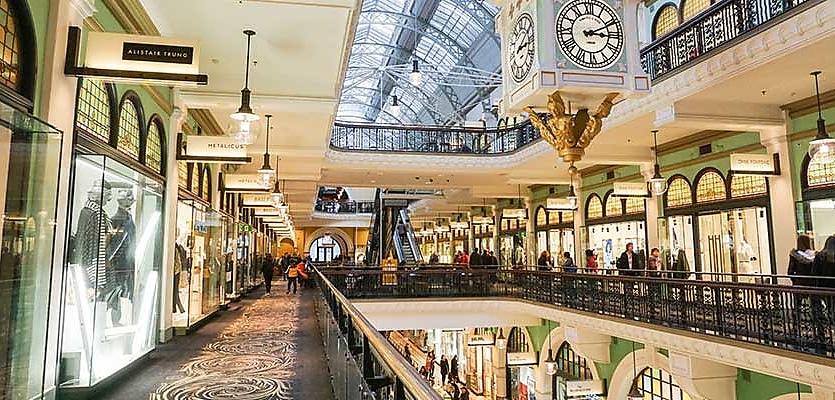As foot traffic flounders and Australian consumers flock online for shopping experiences, many people have wondered about the role of traditional retail into the next decade — but it’s all a matter of perspective, according to two experts in the space.
In the latest edition of Herron Todd White’s Month in Review for September 2020, the property valuation and advisory company acknowledged that “it feels a bit like traditional retail just can’t catch a break in the 21st century”.
But according to Herron Todd White’s director of valuation policy and compliance, Kevin Brogan, and Real Investment Analytics’ managing director, Anthony De Francesco, “this is the point where innovation and adoption can meet and prevail”.
From Mr De Francesco’s perspective, the COVID-19 pandemic has only pushed fast-forward on the transformation the sector was already seeing.
He noted the concept of a “shopping centre” only really took off in the 1970s, but they have been evolving ever since, with the addition of cinemas and entertainment in the 1980s, to the inclusion of food courts and specialist eateries in the 1990s and 2000s.
While COVID-19 is a new challenge, Mr De Francesco said it will force the adoption of tenancy mix and designs to better meet the needs of catchment-area demographics and the local community, which is an exciting prospect for consumers who can expect a “new type of centre” will emerge.
It’s “a retail centre that’s no longer strictly just a ‘shopping centre’. It becomes a hybrid product, or a quasi-retail shopping centre.”
“There’ll be shopping centres which will have massive bolt-on (outlets) not just in terms of one or two tenants, but a whole new sector which will sit alongside it.”
One example the managing director highlighted would be a shopping centre in an area with a predominantly young family demographic including educational facilities, a gymnasium for parents, and even childcare facilities in such a retail precinct.
In areas with a high number of retirees, shopping centres may begin to include “a hub for health services where you’ve got a physio, an X-ray facility and other specialty services”.
According to the managing director, “it’s really a change in the demand, which is now requiring a supply response”.
Not only that, Mr De Francesco has predicted that we may even see the traditional centres evolving even further, becoming mixed-use community hubs.
“Now, we’re rethinking what a ‘shopping centre’ actually is.”
A shopping centre may not simply “stand alone” in a community — it may provide residential living, or student accommodation, or educational facilities, as well as healthcare services — “amalgamation of all of these services coming together”.
And post-lockdown, we may see design features in retail spaces start to change.
“People want to shop in a centre where there’s a bit of air, open-air space,” Mr De Francesco added.
He acknowledged that across both retail and commercial, there’s “this whole movement towards mixed use and community. People want to be in an environment where they don’t feel like they’re enclosed.
“Shopping centres in the past have been closed.”
Despite the expenses that are required to make such transformation, Mr Brogan has called it a necessity.
“We may well see a return to ‘main street’ shopping as people shy away from enclosed shopping spaces,” he commented.
While there can be commercial resistance, the director said retail can thrive “by securing the right tenancy mix organically and creating a community space that caters to its residential catchment”.
In addition, main streets overcome some of those cost and time hurdles that face large, enclosed, single-owner shopping centres.
“The transformation process has risks, but the question is, is it riskier if you do nothing?” he queried.
While Mr Brogan has argued “COVID has made it absolutely black and white that the retail model needs to change now to survive”, he is not at all pessimistic for the sector.
“If you’re not in the retail space and you want to get into the retail space, I think this is a great time because you’ll find opportunities,” he highlighted.
“Some current owners will want to get out because they see the sector as too risky or too hard. Others might buy in at this point in the cycle at a relative ‘bargain’.
“What was someone’s constraint or challenge is somebody else’s opportunity.”
ABOUT THE AUTHOR

Grace Ormsby
Grace is a journalist across Momentum property and investment brands. Grace joined Momentum Media in 2018, bringing with her a Bachelor of Laws and a Bachelor of Communication (Journalism) from the University of Newcastle. She’s passionate about delivering easy to digest information and content relevant to her key audiences and stakeholders.







You are not authorised to post comments.
Comments will undergo moderation before they get published.